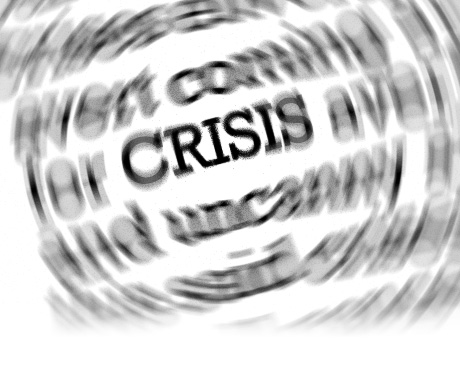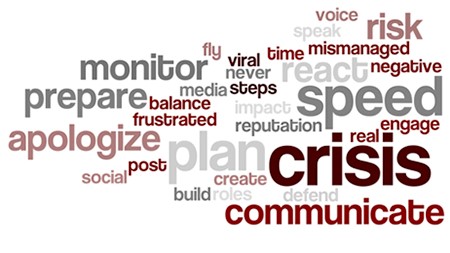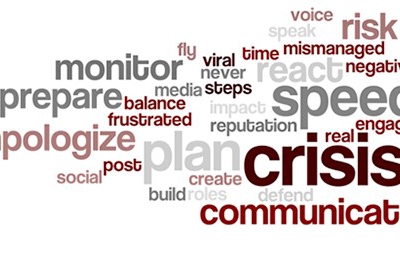How to Respond to Cybersecurity Misinformation Online
False information about cybersecurity threats spreads rapidly across social media and digital channels, creating confusion and potentially damaging organizational reputations. According to the World Economic Forum’s Global Cybersecurity Outlook 2025, misinformation campaigns targeting companies increased by 300% between 2022 and 2024. The rising prevalence of AI-generated content and deepfakes makes detecting and responding to cybersecurity misinformation more challenging than ever before. Organizations need a structured approach to identify, track, and counter false narratives while promoting accurate information through trusted channels.
The first step in addressing cybersecurity misinformation is implementing robust monitoring systems to catch false narratives early. Social listening platforms with anomaly detection capabilities help identify sudden spikes in conversations from low-credibility sources. These tools scan for common indicators of misinformation, including emotional manipulation tactics, sensationalized headlines, and extraordinary claims that seem too good (or bad) to be true.
False information about cybersecurity threats spreads rapidly across social...
How To Communicate Transparently With Local Media During A Crisis
Managing a public relations crisis requires swift action and strategic communication through local media channels. When organizations face reputation challenges, their response through local media can make or break public trust. Local media remains a powerful force in shaping community perceptions, with 75% of Americans trusting their local news organizations more than national outlets, according to a 2023 Pew Research study. This guide will show you how to work effectively with local media during crisis situations, build strong relationships with journalists, and turn challenging moments into opportunities for strengthening community connections.
Local media serves as a direct line of communication to your community during difficult times. These outlets understand local context, maintain strong community relationships, and can help organizations communicate more effectively with their immediate stakeholders. According to the Reuters Institute Digital News Report 2023, local news consumption increased by 15% during crisis events, highlighting its critical role in information dissemination.
Managing a public relations crisis requires swift action and strategic...
Identifying Potential Crisis Scenarios for Effective Risk Planning
Organizations face an increasing array of potential crises that can disrupt operations, damage reputations, and impact stakeholders. According to a 2023 PwC Global Crisis Survey, 95% of business leaders expect to face a crisis within the next two years, yet only 39% feel highly confident in their ability to respond effectively. Identifying potential crisis scenarios before they materialize allows organizations to develop targeted response plans, allocate resources efficiently, and minimize negative impacts when incidents occur. This comprehensive guide will help risk managers and organizational leaders establish systematic approaches to crisis identification and preparation.
Crisis scenarios come in many forms and can affect organizations differently based on their industry, size, location, and operational model. Natural disasters, cybersecurity breaches, workplace violence, product recalls, financial misconduct, and public relations issues represent just a few potential threats. The Institute for Crisis Management reports that 65% of organizational crises are “smoldering” issues that could have been identified and addressed before escalating into full-blown emergencies.
Organizations face an increasing array of potential crises that can disrupt...
Why Marketing Is Key To Mitigating Damage In Cyber Attacks
A cyberattack can shatter customer trust in minutes, leaving organizations scrambling to maintain their reputation and relationships. When sensitive data falls into the wrong hands, public relations teams step into a critical role as the bridge between the company and its stakeholders. Recent studies show that 60% of small companies go out of business within six months of a cyberattack, making effective PR response essential for survival. The way an organization communicates during this crisis can mean the difference between rebuilding customer confidence and suffering permanent brand damage. PR professionals must balance transparency with security, speed with accuracy, and empathy with action to guide their organization through the aftermath of a breach.
The initial response to a cyberattack sets the tone for all future communication. According to a 2023 IBM Security study, companies that respond within the first 24 hours of discovering a breach save an average of $1.2 million in breach costs compared to slower responders.
A cyberattack can shatter customer trust in minutes, leaving organizations...
How to Create a Crisis Communication Template
When a crisis hits your organization, every second counts. A well-structured crisis communication template acts as your roadmap through turbulent times, helping you respond quickly and effectively to protect your organization’s reputation and maintain stakeholder trust. According to a PwC Global Crisis Survey, 95% of business leaders expect their organization to face a crisis in the future, yet only 39% have a crisis response plan in place. This guide will walk you through creating a practical crisis communication template that you can adapt and implement immediately when needed. We’ll cover the essential components, team structures, messaging frameworks, and real-world examples to help you build a robust crisis response system.
The foundation of an effective crisis communication plan starts with a clear, accessible structure that team members can quickly navigate during high-pressure situations. Your template should include several key sections that guide your organization’s response from initial crisis detection through resolution.
When a crisis hits your organization, every second counts. A well-structured...
Top Crisis Management Mistakes: Common Errors & How To Avoid
Major corporate crises can devastate organizations, damage reputations, and cost billions in losses when mishandled. From BP’s Deepwater Horizon disaster to Facebook’s Cambridge Analytica scandal, history shows how poor crisis management amplifies negative impacts. Looking at real-world examples reveals common patterns in failed responses – delayed action, lack of preparation, ineffective communication, and leadership missteps. By studying these cases closely, organizations can identify critical weaknesses in their own crisis readiness and take steps to avoid similar mistakes. This analysis examines major crisis management failures, breaks down what went wrong, and provides actionable lessons for building more resilient response capabilities.
Crisis management plans often fail due to several fundamental issues that leave organizations vulnerable when emergencies strike. One of the most frequent problems is incomplete risk assessment – companies either fail to identify potential crisis scenarios or underestimate their likelihood and potential impact. BP’s Deepwater Horizon disaster provides a stark example, as the company had not adequately planned for a major oil spill despite operating in high-risk deep water conditions.
Major corporate crises can devastate organizations, damage reputations, and...
Crisis Management in Health Tech: A Leadership Guide For AI-Driven Medicine
Health technology companies face unique challenges when managing crises, from AI system failures to data breaches that affect patient care. Recent statistics show that 82% of healthcare organizations experienced some form of cyber incident in the past year, while AI-related errors in medical applications rose by 45%. The stakes remain exceptionally high – a single incident can erode years of built trust, compromise patient safety, and trigger regulatory investigations. This guide examines proven strategies for health tech leaders to detect, respond to, and prevent crises while maintaining operational stability and stakeholder confidence.
When AI systems make mistakes in drug discovery processes, quick identification and clear communication become paramount. Organizations need robust monitoring systems that can flag anomalies in real-time. According to Deloitte’s 2025 Healthcare Outlook, companies that implement continuous AI monitoring detect errors 76% faster than those using periodic reviews.
Health technology companies face unique challenges when managing crises, from...
Crisis Management in the Fitness Industry: A Strategic Guide for Gym Owners
The fitness industry faces unique challenges when crisis strikes. From sudden closures during the COVID-19 pandemic to equipment malfunctions and health emergencies, gym owners must prepare for various disruptions that can impact operations and member trust. Recent data shows that fitness centers with crisis management plans reduce incident likelihood by 60% and respond more effectively when problems arise. This guide examines proven strategies for crisis preparation, response, and recovery in the fitness sector, drawing from real-world examples and research-backed approaches.
Creating an effective crisis response starts with assembling the right team and establishing clear protocols. Your crisis management team should include representatives from management, legal, public relations, and frontline staff. Each member needs defined responsibilities and decision-making authority.
The fitness industry faces unique challenges when crisis strikes. From sudden...









